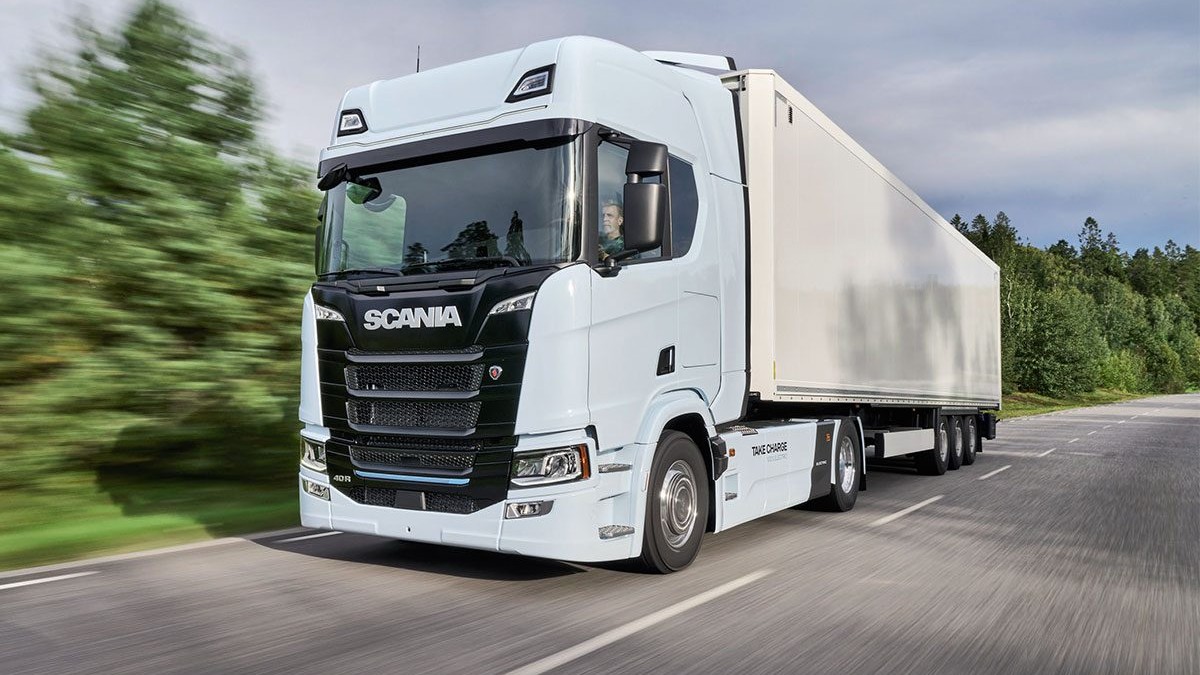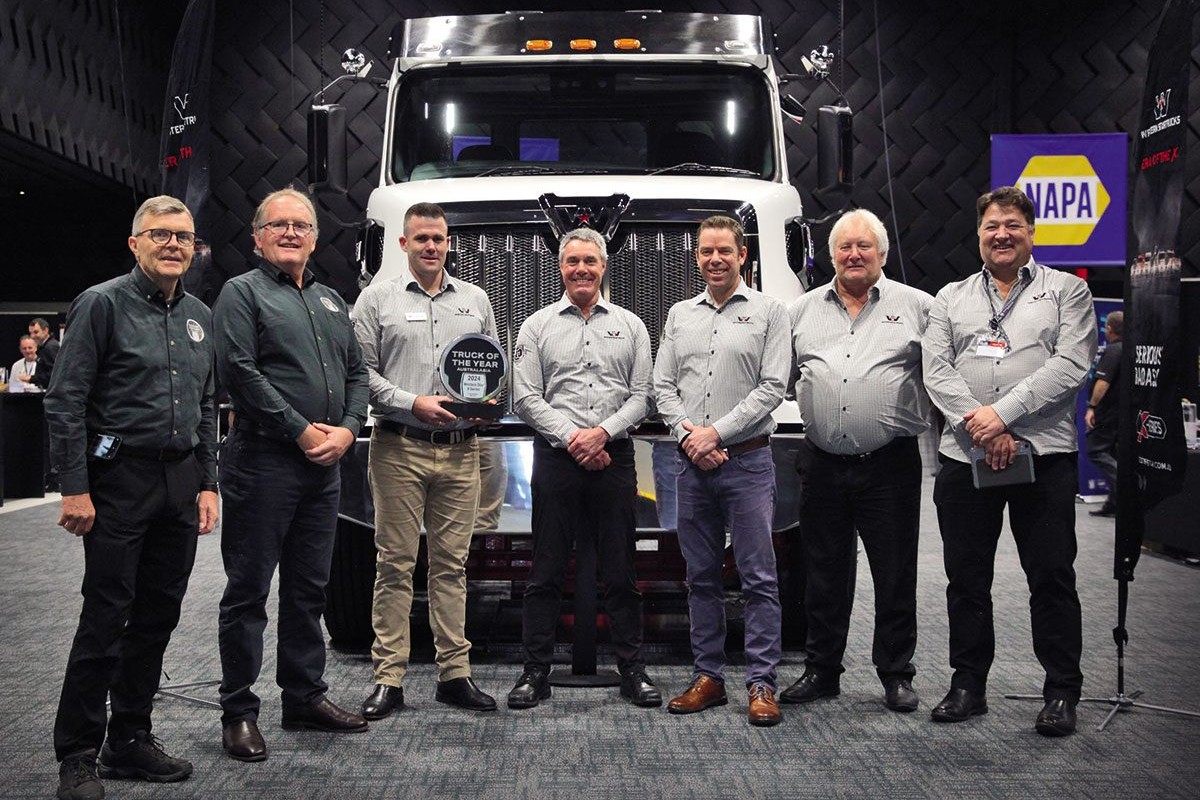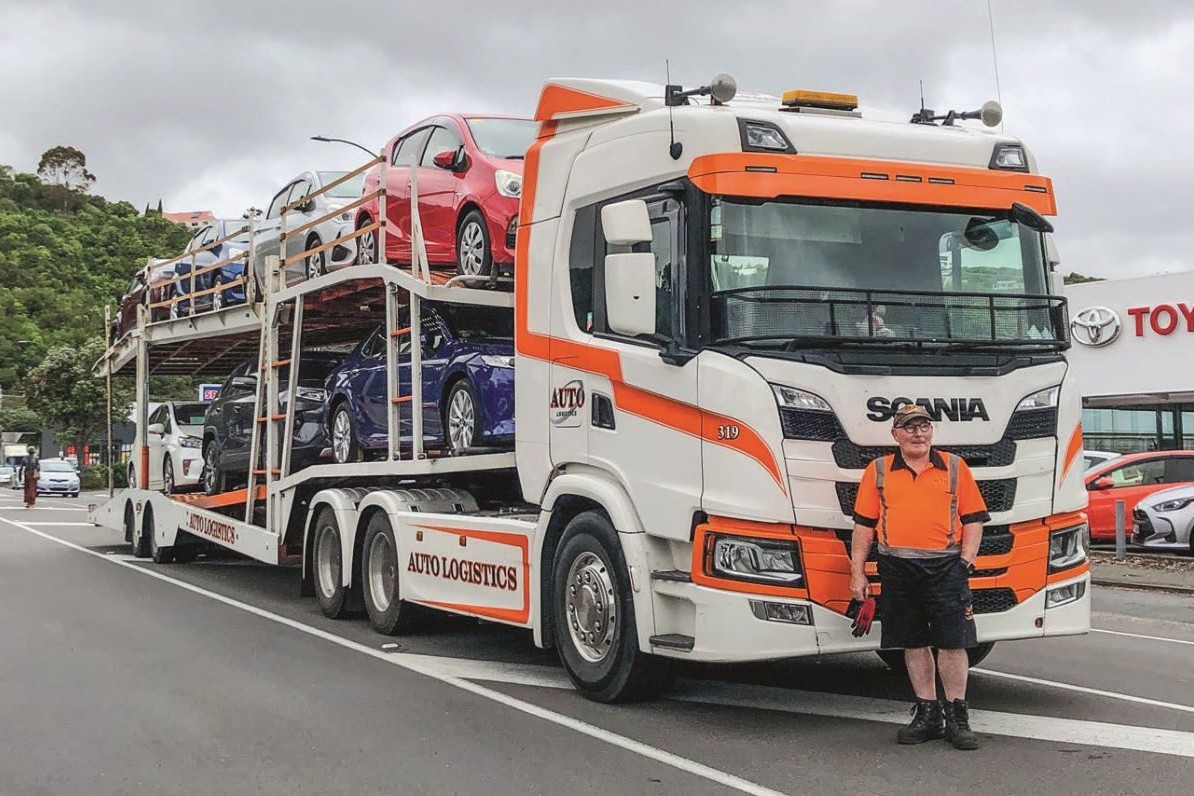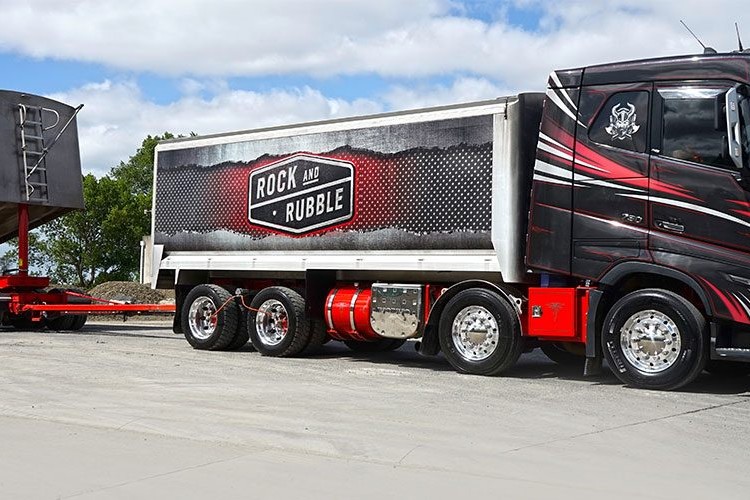Next-level electric
The production of Scania’s R- and S-cab electric vehicles is underway in Södertälje, Sweden, and the company says its electric truck technology has now developed to a point that makes it an attractive and relevant option to a broad spectrum of customers, regardless of their transport requirements.
Operating zero-emission trucks is no longer a privilege for the chosen few. That’s the official line from Fredrik Allard, senior vice president and head of E-mobility at Scania. The company’s recent launch of its heavy R- and S-series electric trucks has opened up the option of electric propulsion to linehaul operations while offering related services – such as Scania Charging Access – that it says “are lowering the threshold for a transformation towards fossil-free transport”.
“Apart from true long-haul operations, few buyers today cannot find what they need from an operational viewpoint,” says Allard. “Sure, there are still certain applications that are less prone to turn electric in the near future, but many buyers will be amazed when they realise what these trucks are capable of and their efficiency together with our digital services.”
Built around Scania’s modular system, the trucks are offered as rigid and tractor units in 4×2, 6×2 and 6×2*4 configurations with R- and S-series cabs. The trucks offer gross train weights up to 64 tonnes (22,000kg GVM), continuous power levels of 400kW (536hp) or 450kW (603hp), and charging capacity up to 375kW.
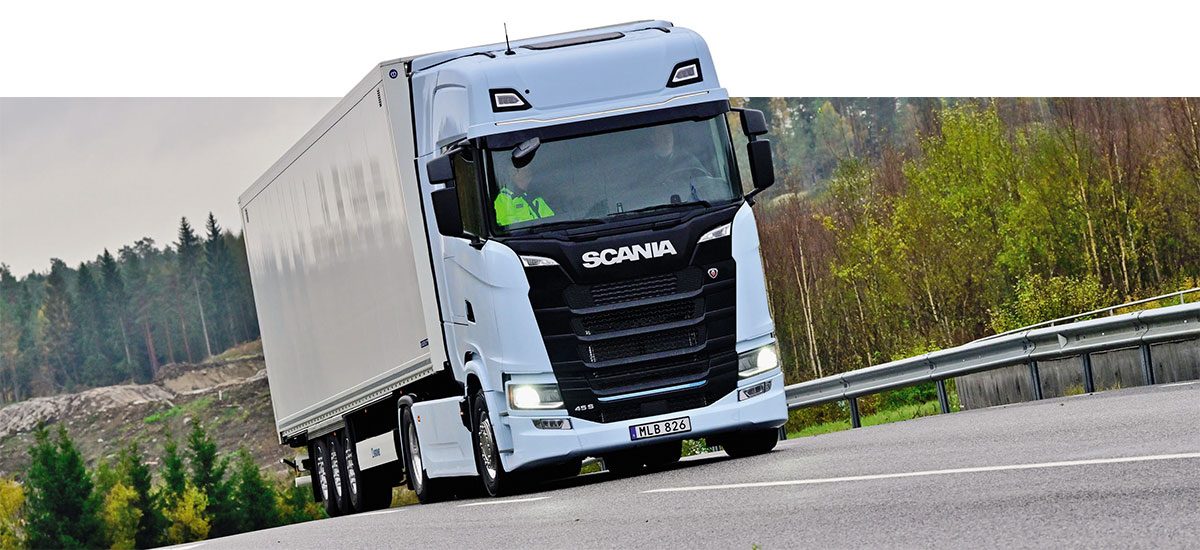
To make onboarding an electric truck easier for the operator and to match the actual operation requirements more closely, Scania has introduced a range of new ‘Electric Machines’, offering a range of power levels and motor and transmission combinations. The EM C1-4 is expected to become the volume seller, offering flexibility and five levels of power output. (See table)
“With its five different power levels and four gears, the EM C1-4 has flexibility written all over it. With this as the foundation, we can guide each customer to exactly the right configuration regarding the number of batteries and our services so that it truly fits their needs,” says Allard.
As with all electric vehicles, driving range is the predominant drawback compared with internal combustion and fossil fuel. The new heavy Scanias offer between 250km and 390km on a full charge (from up to six batteries and 624kWh installed battery capacity), depending on model, weight, operation and driving factors. Charging is via CCS2 (combined charging system) at 375kW (500A), with one hour of charging adding 270km of range, or a charge from 20% to 80% in 45 minutes. A 130kW charger will add 100km of range in an hour. Charging is managed by an in-house system, and the trucks are prepared for 700kW MCS (megawatt charging system) charging with support for full mega-watt charging.
However, Allard says the approach to operating an electric truck needs to be different. “We are a bit stuck on the concept of always filling from 10% to 100% as we do with diesel,” he says.
“With battery-electric vehicles, the mindset should be to charge for the required range instead. If you have 120km to go to your home-depot charger, it would be unnecessary to charge for more than that distance with some small extra margin.”

Scania uses high-energy-density nickel manganese cobalt (NMC) battery cells from Swedish manufacturer Northvolt, which have a carbon footprint “approximately one-third of a comparative industry reference”. Scania says the batteries have a life capacity of 1,500,000km and that one of their main strengths is their charging characteristics. The company says the batteries can be charged repeatedly up to 100% of the state-of-charge window without any impact on their lifespan (traditionally, it is recommended to keep batteries charged within a minimum and maximum percentage range). They have a straight charging curve, meaning they charge with the same speed when almost full (traditionally, battery charging slows for the last 20% or so).
As a battery system designed for heavy-duty trucks, the straight charging curve gives predictable charging times and the long battery life secures a low total cost of ownership, says Scania.
Advanced thermal management is key in achieving this battery performance. The system includes a heat pump for harvesting heat from available losses (such as the motor, batteries, auxiliaries and ambient air), a focus on vehicle cooling with efficient head-wind utilisation, and an in-house-developed energy and thermal management system to precisely control it.
“We believe that charging issues will be regarded as less problematic when people learn more about how batteries work in reality,” says Allard. “When we analyse operational patterns, it often becomes evident that the vast majority have all the range they need, with a margin. Tippers and other kinds of rigid-based applications often do fewer than 200km per day when operating in urban areas. If they charge at their home depot and join Scania Charging Access for back-up, range would not be an issue for them.”
So, what’s Scania Charging Access all about? It is the company’s solution to overcoming the issues currently posed by haphazard charging infrastructure. Scania Charging Access offers seamless access to a Europe-wide charging network in 12 countries, with charge points ranked according to how suitable they are for trucks. The customer gets one consolidated invoice from Scania for charging, independent of who operates the charge points in the network, and the service comes without any sign-up or monthly fees.

“We are pioneering a consolidated service for heavy vehicles in Europe,” says Magnus Höglund, head of charging solutions at Scania. “It is primarily designed for en route charging. Our mission is to enable and simplify for true electrification by removing everything from range anxiety to administrative grievances and offering truck- ready charge points.
“We assess and rank all existing charge points manually, both the ones for heavy vehicles and those for passenger cars. This helps us identify the ones that are beneficial for our customers until there is a significant number and an extensive network dedicated solely to heavy vehicles. Charge points that are ranked as ‘truck-ready’ – and their availability – can be filtered using the Scania Driver App or My Scania.”
Although the actual network for trucks and buses is limited to start with, Höglund foresees rapid growth, with the network continuously expanding during 2024 and onwards.
Scania’s first battery electric trucks have been on the market since 2021, driving the brand’s transition towards fossil-free transport with customers operating in urban applications. (It is now gearing up its offering for applications such as distribution trucks and light tippers, with the addition of e-adapted chassis, batteries by Northvolt, and new auxiliary systems that will add better functionality and remove complexity.) The company believes that a step change in the transition towards sustainable, fossil-free transport with zero emissions is imminent, beginning in Europe and the United States. This, it says, is being driven by sustainability demands from customers, increased legislation, and the fact that electric trucks are expected to deliver cost-parity – or better – compared with diesel trucks.
“The interest in battery-electric solutions is immeasurable; potential customers are everywhere,” says Allard. “The fact that some are cautious and limit themselves to ordering a couple of trucks for their fleets is fully understandable since they want to gather experience first. But with our growing portfolio and an expanding infrastructure, Scania’s target of selling 50% electric trucks of our total volume in Europe by 2030 is definitely within reach.”
Making sense of electric
| EM C1-2 | EM C3-6 | EM C1-4 | |
| Continuous power | 230kW | 400 or 450kW | 270, 300, 330, 360 or 400kW |
| Motor/gearbox | Single permanent magnet rotor, 2-speed planetary gearbox | Triple permanent magnet rotor, 6-speed powershift automatic gearbox without torque interruption gearchanges | Single permanent magnet rotor, 4-speed gearbox |
| Battery capacity | 416kWh/ 624kWh (75% useable) | 416kWh/ 624kWh (75% useable) | 416kWh/ 624kWh (75% useable) |
| Claimed max range | 2260km @ 29 tonne 390km @ 29 tonne/td> |
350km @ 40 tonne 250km @ 64 tonne |
390km+ @ 29 tonne 370km+ @ 40 tonne 260km+ @ 64 tonne |
| Max GCM | 29 tonne | 64 tonne | 64 tonne |
| Power take-off | Electric up to 100kW, electro-mechanic up to 60kW | Gearbox PTO 260kW, electric up to 100kW, electro-mechanic up to 60kW | E-machine PTO (mechanic) up to 260kW, electric up to 100kW, electro-mechanic up to 90kW |
Read more
Stars with the X-factor
0 Comments8 Minutes
Garth South
0 Comments2 Minutes
Mind the gap
0 Comments5 Minutes
Rock hammer
0 Comments7 Minutes


